The mating display of the male bird of paradise owes its optical extravagance to a background so black it is the envy of telescope and solar panel engineers, according to a new study published January 9 in the journal Nature Communications.
Their velvety black plumage is so dark it gives the illusion that adjacent patterns of color glow brilliantly, an effect much appreciated by mate-hunting females, according to the researchers. Optical measurements showed that these feather patches absorb up to 99.95% of the direct incident light, a percentage comparable to manmade ultra-black materials used in the lining of space telescopes. Microscopic structures of the wings even resemble those designed by engineers to create ultra-black materials used to facilitate light absorption in solar panels.
“Evolution sometimes ends up with the same solutions as humans,” said senior author Rick Prum, the William Robertson Coe Professor of Ornithology of Ecology and Evolutionary Biology at Yale.
The juxtaposition of darkest black and colors creates to bird and human eyes what is essentially an evolved optical illusion, said co-lead author Dakota “Cody” McCoy, a Yale graduate now with the Department of Organismic and Evolutionary Biology at Harvard.
“An apple looks red to us whether it is sitting in the bright sunlight or in the shade because all vertebrate eyes and brains have special wiring to adjust their perception of the world according to ambient light,” McCoy said. “Birds of paradise, with their super-black plumage, increase the brilliance of adjacent colors to our eyes, just as we perceive the red even though the apple is in the shade.”
- Top right, microstructure of super black feather from Paradise Riflebird still appears black even after being coated with gold, bottom right.
- A frontal view of a male bird of paradise’s mating display. Photo credit: Ed Scholes.
Intriguingly, said the researchers, the microstructures in the feathers of the bird of paradise not involved in mating display lack the characteristics of the ultra-black plumage, another testimony to the importance of sexual selection in evolution.
“Sexual selection has produced some of the most remarkable traits in nature,” Prum said. “Hopefully, engineers can use what the bird of paradise teaches us to improve our own human technologies as well.”
Teresa Feo of the National Museum of Natural History in Washington D.C. is co-lead author of the paper. Todd Alan Harvey of Yale is also an author.
Reference: “Structural absorption by barbule microstructures of super black bird of paradise feathers” by Dakota E. McCoy, Teresa Feo, Todd Alan Harvey and Richard O. Prum, 9 January 2018, Nature Communications.
DOI: 10.1038/s41467-017-02088-w

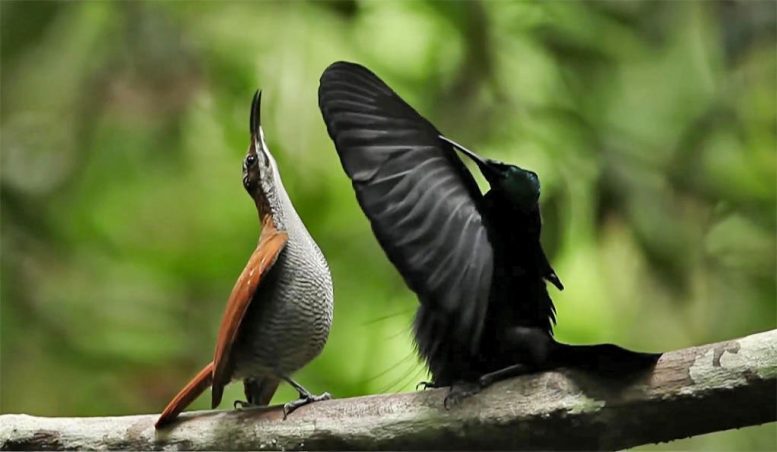
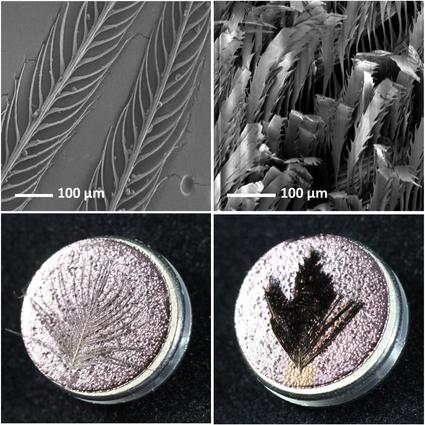
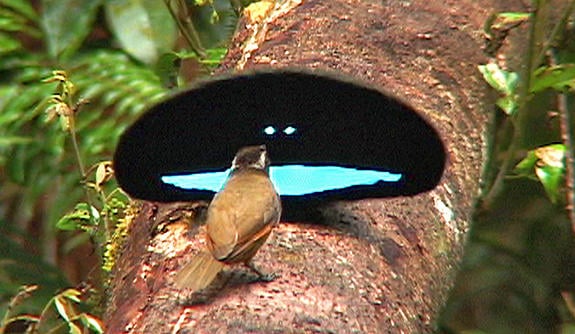
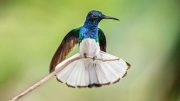
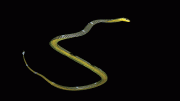
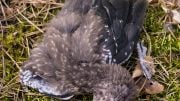
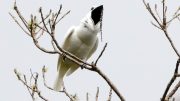
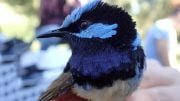
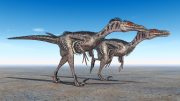
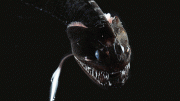
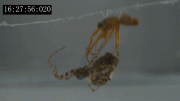
Be the first to comment on "Super Black Gives Bird of Paradise an Edge"